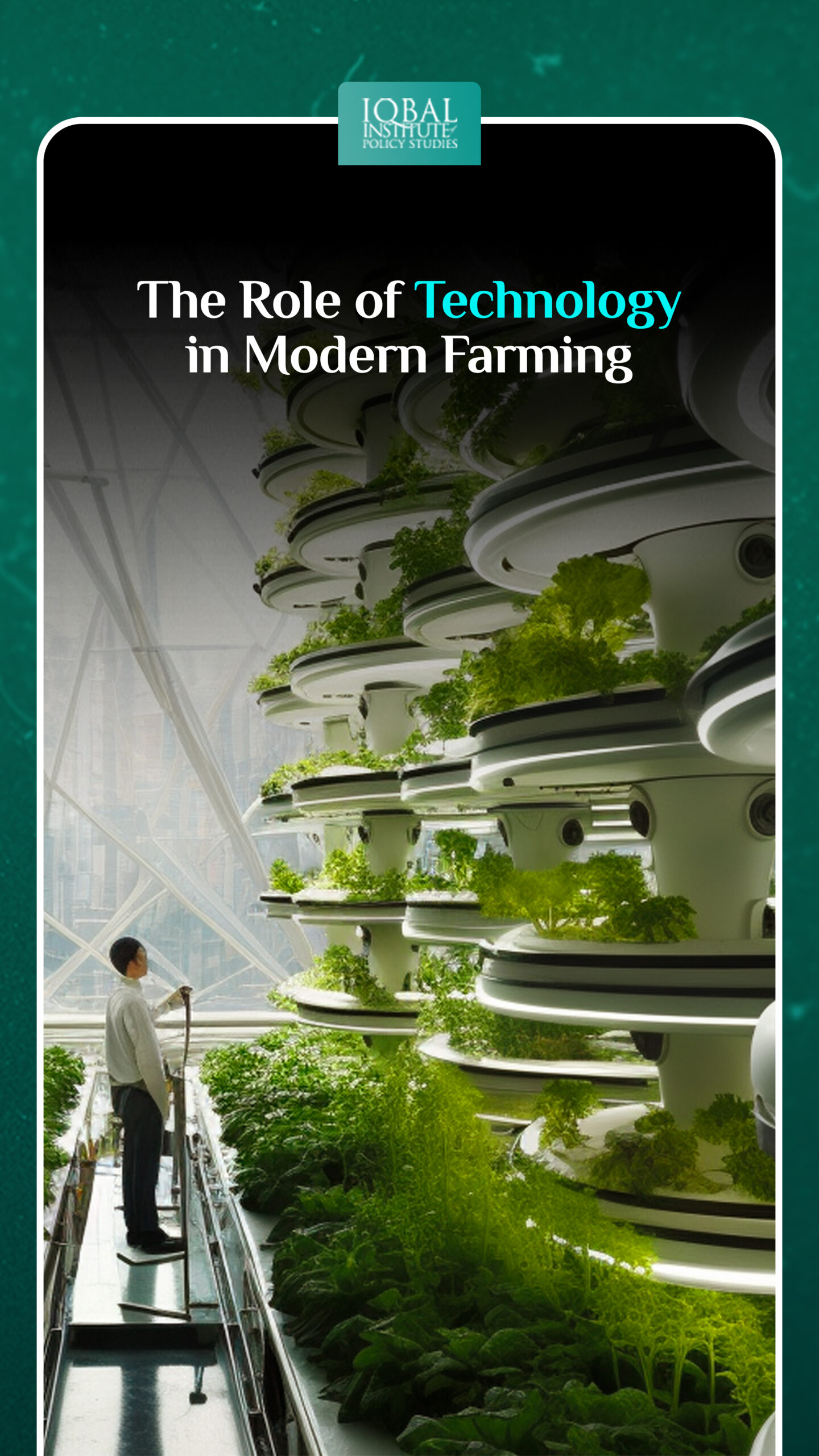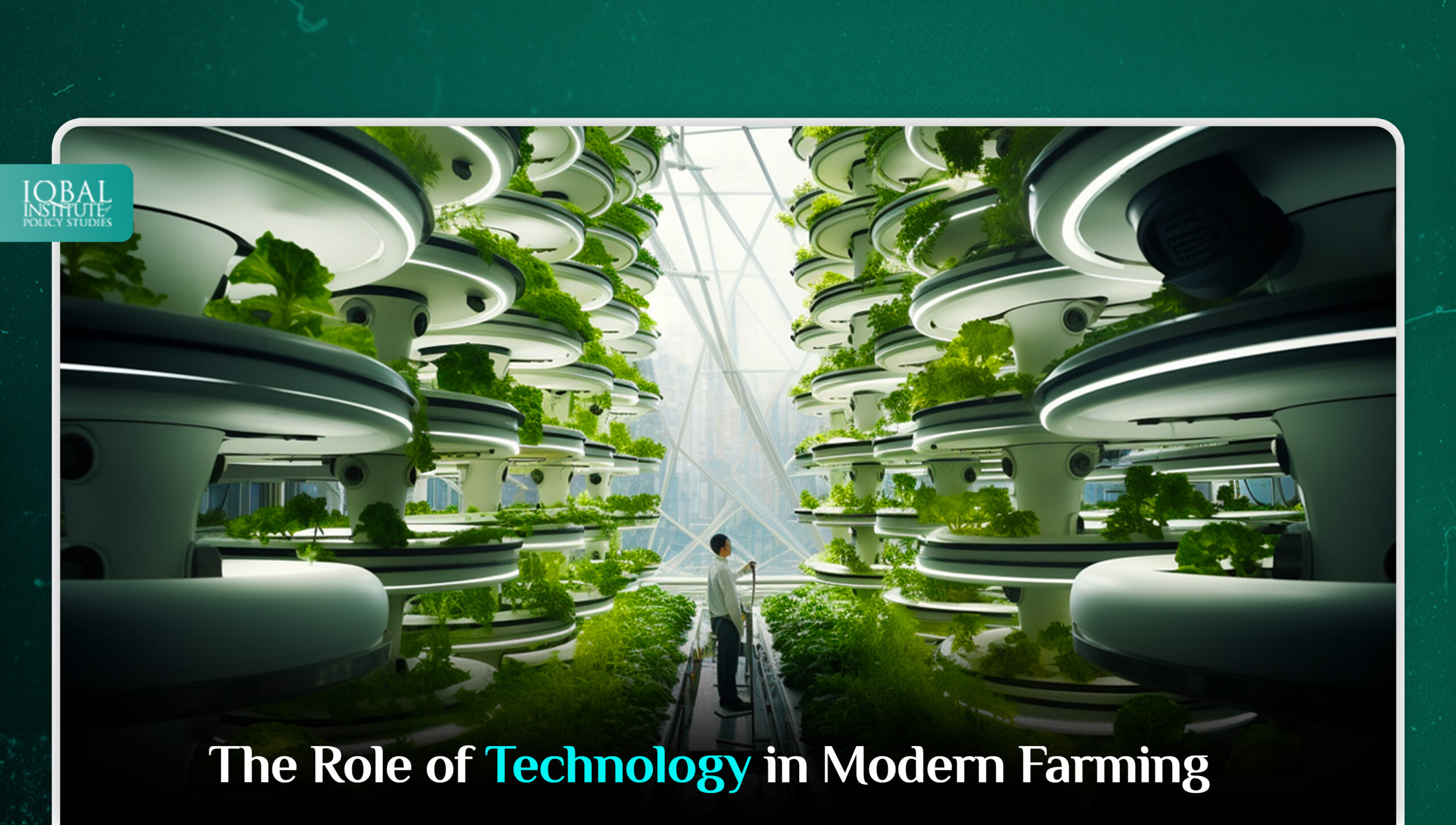Agricultural development practises have long been seen as depleting natural resources faster than they could be replenished. Human population growth has led to an increase in demand for food and shelter, which the “natural” carrying capacity of the land is under strain to provide. However, the agriculture industry undergoing a tremendous shift from the days of manual labour and traditional farming techniques to the present era of technology-driven agriculture. Modern farms and agricultural operations are vastly evolving, owing to technological breakthroughs such as sensors, gadgets, machinery, and information technology. Robots, temperature and moisture sensors, aerial photographs, and GPS technology are not only used by farmers to cultivate crops, raise livestock, and manage their resources in agriculture but also enable enterprises to be more profitable, efficient, safe, and environmentally friendly. While developed nations have swiftly embraced the benefits of technology in modern farming, progress in developing nations remains a complex and challenging endeavour. To address the technological disparity in modern farming, governments and international organizations must prioritise supporting research and development efforts tailored to the specific needs and challenges faced by agricultural communities in developing nations.
Ways Technology is Revolutionising Agriculture
Precision Farming
Precision farming, often known as precision agriculture, is a cutting-edge strategy that uses technology to optimise farm management. Sensors, GPS, and other smart devices are combined to collect data on soil conditions, weather patterns, and crop health. Farmers may make informed judgements about irrigation, fertilisation, and pest management by analysing this data. This focused approach not only reduces resource waste but also increases agricultural output and quality. According to a recent report by Grand View Research, Inc., the precision agriculture market would be worth $43.4 billion by 2025 (Ku & Serna, 2023). Faster, more adaptable startups that systematically maximise crop output are appealing to the developing new generation of farmers.
Modern Greenhouses
In recent decades, the greenhouse industry has evolved from tiny research and aesthetic facilities (i.e., botanic gardens) to much larger facilities that compete directly with land-based traditional food production. The global greenhouse market now produces around $350 billion in vegetables per year (Ku & Serna, 2023). Modern greenhouses are getting more technologically advanced, with LED lights and computerised control systems used to precisely tailor the growing environment. Successful greenhouse enterprises are expanding dramatically and situating their growing facilities near metropolitan areas. Furthermore, the greenhouse business is becoming more capital-infused, utilising venture money and other sources to build out the infrastructure required to compete in the present market.
Drones in Agriculture
Unmanned Aerial Vehicles (UAVs) or drones have soared into the agricultural domain, offering a bird’s-eye view of farms and fields. According to reports, the agricultural drone market will expand from $1.2 billion (USD) in 2019 to $4.8 billion in 2024 (Crop Tracker, 2022). Equipped with high-resolution cameras and multispectral sensors, drones can monitor large areas with great accuracy. They provide real-time data on crop health, identify areas of concern, and help farmers detect diseases and nutrient deficiencies early on. The integration of drones in agriculture has streamlined crop monitoring and assessment, saving both time and labour. Moreover, automated drone seeders are largely used in the forestry industry which allows for the replanting of difficult-to-reach locations without endangering workers. With a crew of two operators and 10 drones are efficiently capable of planting 400,000 trees each day (Crop Tracker, 2022).
Internet of Things (IoT)
The Internet of Things (IoT) has paved the path for smart farming, in which networked devices collaborate to automate numerous agricultural activities. In 2022, IoT in agriculture held a market share of $13.76 billion (Shalimov, 2023). Smart sensors and actuators make data collecting and analysis easier, allowing farmers to remotely monitor soil moisture, temperature, and humidity levels. Water conservation can be promoted via automated irrigation systems that modify water delivery depending on real-time data. Furthermore, IoT-enabled livestock tracking systems improve animal welfare and aid in herd management.
Vertical Farming
The demand for fresh food in cities is increasing as urbanisation accelerates. Vertical farming, which grows crops in stacked layers within regulated indoor settings, provides a solution to this problem. Vertical farms can produce crops year-round with substantially reduced water and space requirements by utilising artificial lighting, hydroponics, and aeroponics. This environmentally friendly farming method is gaining favour, especially in highly populated places where traditional agriculture may be problematic. According to a study vertical farms are utilising 95% less water and provide crop yields 20-30 times greater than normal agriculture (Beh, 2022).
AI and Machine Learning
Artificial intelligence (AI) and machine learning algorithms have made an impact in agriculture by providing farmers with important insights. According to studies, the AI in agricultural market would be worth $4 billion by 2026, growing at a rate of more than 25% each year (Technative, 2023). AI can anticipate crop yields, assess market trends, and optimise planting and harvesting schedules by analysing massive volumes of data. Furthermore, AI-powered robotics are being created to conduct operations including weeding, pruning, and harvesting with greater precision and efficiency, eliminating the need for manual labour.
Blockchain Technology
Blockchain technology is revolutionising the agriculture supply chain by increasing transparency and traceability. From farm to fork, every stage of the food manufacturing and distribution process may be recorded in an immutable ledger. This ensures that consumers can verify the origin and quality of the fruit they buy, while also assisting farmers in obtaining more equitable rates for their products. Blockchain’s importance in agriculture extends beyond transaction security to encourage trust and responsibility throughout the industry.
Renewable Energy Sources
Agri-food chains consume around 30% of global energy, the majority of which occurs post-harvest and in the form of fossil fuels. Approximately 30% of total energy is lost due to food losses at some point along the value chain (FAO, 2021). However, renewable energy sources, such as solar panels and wind turbines, are increasingly being integrated into agricultural operations. Farms can produce their own electricity, lowering their carbon impact and energy expenditures. Furthermore, excess energy can be fed back into the grid, assisting in the widespread adoption of renewable energy solutions. Renewables are expected to account for more than 90% of global electricity growth over the next five years, surpassing coal to become the world’s largest source of electricity by early 2025 (IEA, 2022).
Satellite Imagery
The global satellite imaging for the agricultural market was worth $516.1 million in 2022, and it is predicted to rise at a CAGR of 7.50% from 2023 to 2028, reaching $785.3 million by 2028 (Report Linker, 2023). Satellite imagery plays a pivotal role in modern farming, revolutionising agricultural practices and empowering farmers with valuable insights. By providing a bird’s-eye view of vast agricultural landscapes, farmers can monitor and analyse, weather forecasting, crop monitoring, and yield analysis. This technology enables farmers to make timely and informed decisions regarding irrigation, crop selection, and other vital farming practices, ultimately contributing to increased productivity and sustainable agriculture.
Conclusion
The impact of technology on modern farming has been nothing short of transformative. Technological advances not only increase farmer production and income but also promote sustainability and environmental stewardship. As technology advances, the role it plays in agriculture will become ever more vital in feeding the world’s growing population and safeguarding our planet’s affluent and resilient future. Embracing these advancements is not an option for the modern farmer trying to prosper in an ever-changing world; it is a requirement.
This article is written by Haneen Gul. Haneen is a research analyst at the Iqbal Institute of Policy Studies (IIPS).
References
Beh, B. (2022, July 28). Vertical Farming: Location a Key Factor to Success. Retrieved from IDTechEx: https://www.idtechex.com/en/research-article/vertical-farming-location-a-key-factor-to-success/27312
Crop Tracker. (2022). Drone Technology In Agriculture. Retrieved from Crop Tracker: https://www.croptracker.com/blog/drone-technology-in-agriculture.html
FAO. (2021). Renewable energy for agri-food systems: Towards the Sustainable Development Goals and the Paris Agreement. Retrieved from Food and Agricultural Organization of the United Nations: https://www.fao.org/3/cb7433en/cb7433en.pdf
IEA. (2022, December 6). Renewable power’s growth is being turbocharged as countries seek to strengthen energy security. Retrieved from International Energy Agency: https://www.iea.org/news/renewable-power-s-growth-is-being-turbocharged-as-countries-seek-to-strengthen-energy-security
Ku, L., & Serna, I. (2023, April 25). New Agriculture Technology in Modern Farming. Retrieved from Plug and Play: https://www.plugandplaytechcenter.com/resources/new-agriculture-technology-modern-farming/
Report Linker. (2023, june 6). Satellite Imaging for Agriculture Market – A Global and Regional Analysis: Focus on, Application, End User, Product, and Region – Analysis and Forecast, 2023-2028. Retrieved from Global Newswire: https://www.globenewswire.com/news-release/2023/06/06/2682602/0/en/Satellite-Imaging-for-Agriculture-Market-A-Global-and-Regional-Analysis-Focus-on-Application-End-User-Product-and-Region-Analysis-and-Forecast-2023-2028.html
Shalimov, A. (2023, March 1). IOT IN AGRICULTURE: 9 TECHNOLOGY USE CASES FOR SMART FARMING (AND CHALLENGES TO CONSIDER). Retrieved from Eastern Peak: https://easternpeak.com/blog/iot-in-agriculture-technology-use-cases-for-smart-farming-and-challenges-to-consider/
Technative. (2023, January 25). How AI Will Yield Major Benefits For Agriculture. Retrieved from https://technative.io/how-ai-will-yield-major-benefits-for-agriculture/



Leave a Reply